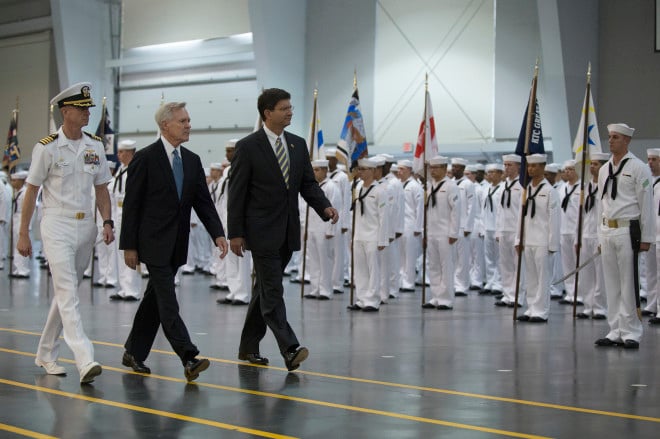
As I sat in my windowless office at the Washington Navy Yard on “lockdown” all day on Sept. 16 — unable to see or hear any of the mayhem that was occurring outside and also unable to assist, I felt helpless.
Once again, I wondered what kind of person would commit such an atrocity. I was saddened to learn that the mass shooter was a veteran.
Today’s all-volunteer force is arguably one of the most highly trained and highly educated in our nation’s history. To maintain that edge, it must have a strong recruiting pipeline, one that seeks out physically fit, smart young men and women who are interested in serving their country and gaining valuable skills for subsequent careers outside the military.
Why, then, don’t they recruit for mental health and resiliency?
Some headlines about increased rates of military post-traumatic stress disorder (PTSD) and suicides would lead you to believe that repeated deployments and exposure to combat trauma are the primary cause of a sharp rise in both. Last month’s mass murder at the Navy Yard would seem to lend credence to that theory.
But a study just released by the Journal of the American Medical Association turns that assumption on its head. The authors analyzed more than 150,000 military service members (members of the Millennium Cohort Study, the largest longitudinal U.S. military study that was launched in 2001). More than half of the reported suicide victims had never witnessed combat or even deployed. On the contrary, the single biggest risk factor associated with the suicide deaths among this group was a mental disorder. Another major risk factor was alcohol abuse.
In other words, many of these service members probably entered the military with these risk factors, or pre-existing conditions. Military service may have exacerbated their illnesses, but it’s clear from this study — and from the profile of the Navy Yard shooter — that deployment and exposure to combat trauma did not.
Which brings us back to the question: Why aren’t we recruiting for mental resilience?
Recruiting the right mental state made a significant difference in the survival and health of one group of combat veterans who were unexpectedly tested like no other group. Our prisoners of war incarcerated in North Vietnam between 1964 and 1973 were and still are the longest-held group of POWs in our nation’s history. But they remain one of the healthiest and most successful group of combat veterans in our nation’s history.
Their average lifetime PTSD rate is somewhere around 4 percent. After their trauma, the roster of leadership positions attained by this group includes 24 reaching flag or general officer rank and seven elected to the U.S. Congress. Others served as a U.S. ambassador, a federal trade commissioner, a U.S. presidential candidate, a U.S. vice presidential candidate, doctors, lawyers, business executives, authors and ministers.
Admittedly, these aviators brought some advantages to the trauma of being POWs. Not only were they older than the average Vietnam soldier (the POWs’ average age was 34) — bringing more maturity to their experience, they were also highly educated and trained for their mission.
But researchers at the Mitchell Center for POW Studies in Pensacola, Fla., have determined that they were also optimistic — a carefully defined, testable psychological trait that the Mitchell Center researchers believe can also be taught. The pervasiveness of tested optimism among the POWs lends credence to both the idea of testing for optimism and teaching it to military personnel who face traumatic challenges.
Today’s military tests for physical fitness, education and aptitude among their potential recruits. But do they test for the characteristics that could inoculate service members from the long-term impact of trauma? Do they consistently train for it?
The lessons learned by the Vietnam POWs make a strong case for new thinking: proactively recruiting and training for the attributes that reduce the potential for long-term PTSD. That may mean rejecting potential recruits with potential risk factors. That’s a difficult but necessary decision if we want to reduce headlines like the one from the Washington Navy Yard.




